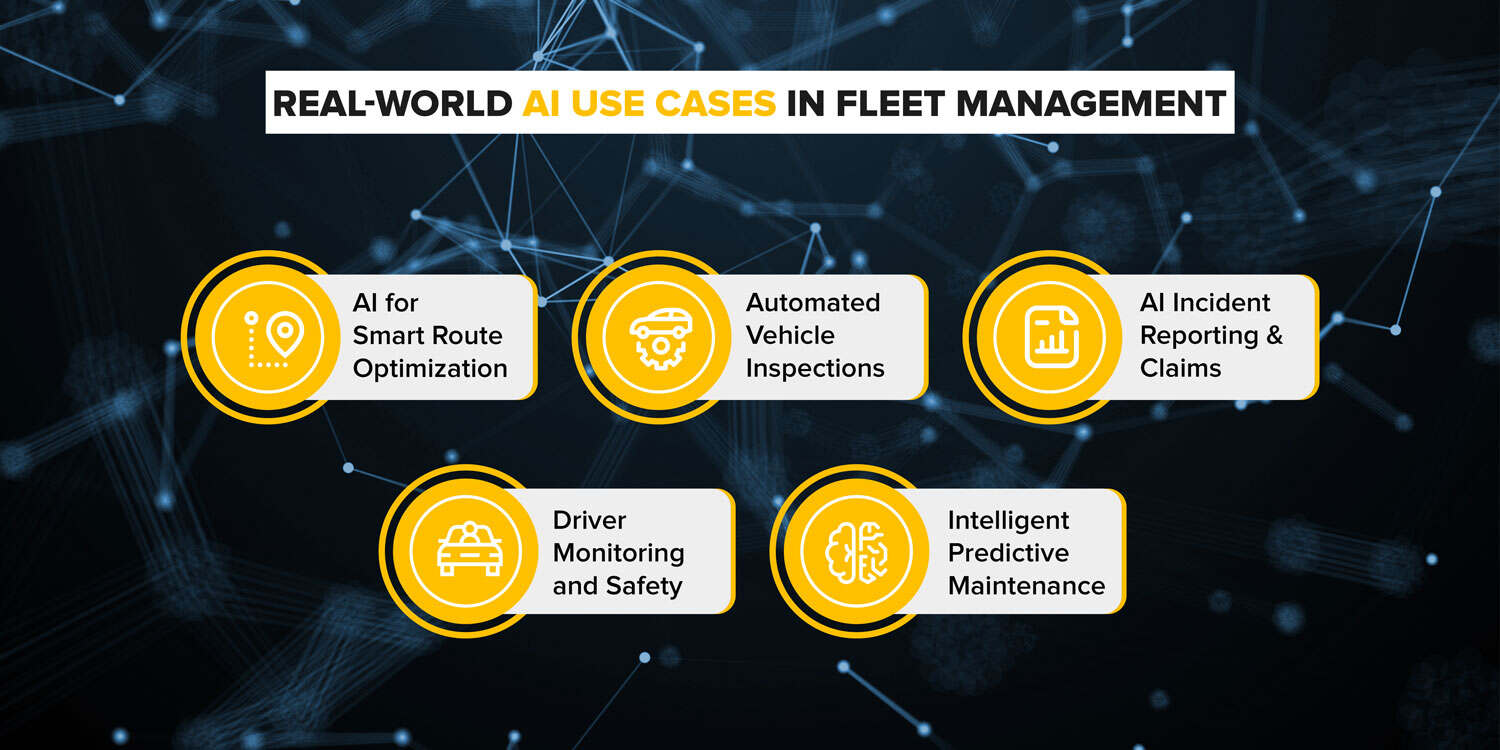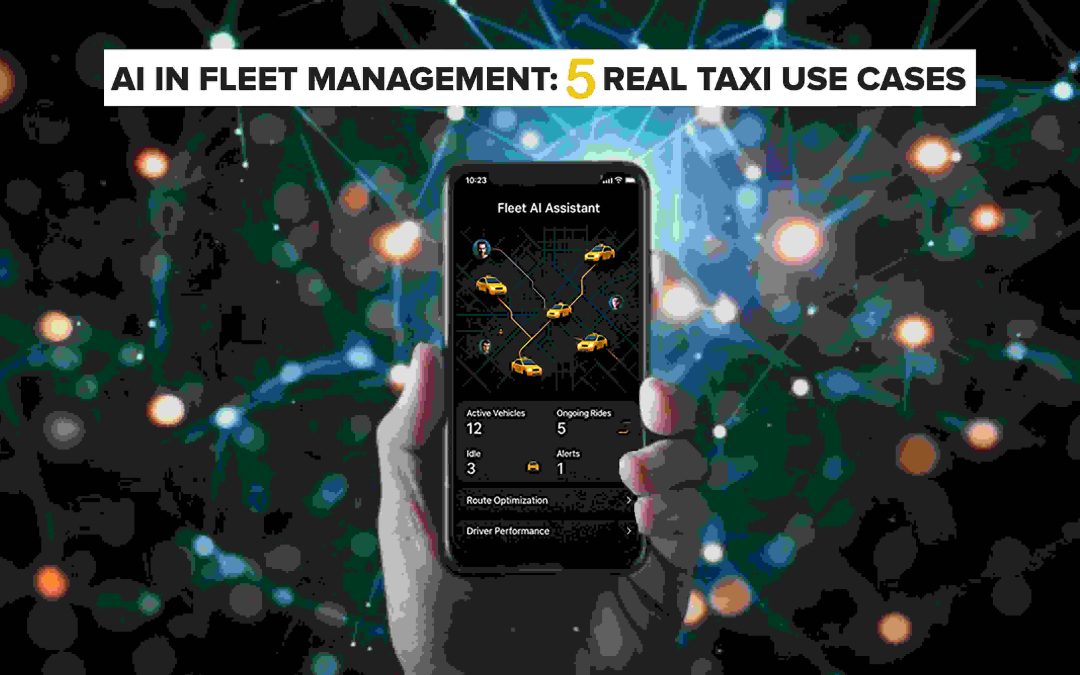With the increased number of taxi fleets, it is more difficult to run them manually. Paper logs or spreadsheets used to monitor vehicles, routes, and drivers may easily cause delays and errors. Drivers can use less efficient routes; vehicles can fail to meet their maintenance appointment, and operators will have a hard time knowing what is going on the ground.
This is where artificial intelligence (AI) transforms all things. Smart AI-driven taxi dispatch software and fleet management systems enable it to be smarter, faster, and data-driven. These systems are used to analyze the routes, to monitor the health of the vehicles, and make bookings automatically.
Using AI, taxi companies will be able to reduce expenses, enhance their operations, and make superior decisions using real-time knowledge.
Why AI Matters in Fleet Management
The daily operations of fleet management are being changed by AI. It also automates various routine tasks such as route planning, vehicle tracking, and scheduling, which saves time and eliminates errors.
Managers can now view all this in real time, fuel consumption, driver performance etc. rather than guesswork or manual checks used to do the same.
The important ones are automation and accuracy. Artificial intelligence can tell when a car requires servicing, identify the shortest route, and identify the unsafe driving behaviors before they lead to issues. This assists fleets to remain efficient, safe, and reliable.
To the operators, AI reduces costs and makes smarter decisions. To drivers, it makes their working day safer, more organized and less stressful and with better communication. To put it briefly, AI transforms fleet management into a data-driven process that would benefit all people on the road.
Real-World AI Use Cases in Fleet Management

1. AI for Route Optimization
AI uses live traffic and weather data to choose the fastest routes. These cuts travel time, save fuel, and improve on-time performance.
2. Automated Vehicle Inspections
Visual AI scans vehicles for damage or maintenance issues. It helps reduce downtime, lowers repair costs, and ensures compliance.
3. Incident Reporting and Claims Processing
AI-powered cameras record trips and detect incidents in real time. This speeds up reporting, simplifies claims, and reduces paperwork.
4. Driver Monitoring and Safety
AI tracks driver’s behavior and sends alerts for fatigue, distraction, or speeding. It helps build a safer environment for drivers and passengers.
5. Predictive Maintenance
AI predicts mechanical issues before they cause breakdowns. This prevents unplanned repairs and extends the life of each vehicle.
Advantages of AI to Fleet Operators.
1. Greater Fuel economy, cost management and uptime.
AI can assist the fleets to consume less fuel, as it will select faster routes and evade traffic. It also anticipates the maintenance requirements in advance before the breakdowns occur and minimizes the repair expenses and makes the vehicles to be in operation longer. It will result in fewer delays and general efficiency.
2. Improved Driving and responsibility.
The AI devices track the driving activity in terms of speed, braking, and idle time. The drivers receive immediate feedback to enhance their habits at the time the managers can follow the performance fairly. This makes it safer on the road and a more responsible group.
3. Data-Backed Insights for Smarter Decision-Making
Artificial intelligence gathers and processes real-time information about vehicles, routes, and drivers.
These insights enable fleet managers to plan more efficient routes, plan maintenance, and manage expenses. It transforms information into simple steps to making the business grow.
Challenges of Adopting AI in Fleet Management
1. Initial Setup and Integration Costs
The implementation of AI systems will entail spending on software, sensors, and employee training. These start-up expenses might be difficult to meet by smaller taxi companies, yet they pay off in the long run.
2. Data Quality and Training Requirements
Artificial intelligence prefers most precise and current information. The performance can be constrained by poor tracking or missing records. The teams also require rudimentary training to be able to effectively utilize AI tools and to be aware of the insights they may offer.
3. Building Trust in Automated Systems
There is a possibility that some operators and drivers will be reluctant to use AI in decision-making. Confidence in automated route planning, driver monitoring, and predictive maintenance can be developed only after some time and regular outcomes.
Future of AI in Fleet Operations
1. Connected Vehicles and Smart Fleets
Connected cars sharing real-time data is the future of fleet management. Such intelligent fleets enable operators to monitor the performance, fuel consumption, and service requirements in real-time, resulting in the ease of operations.
2. AI and IoT Working Together
Fleets will be able to make real-time decisions by using AI and the Internet of Things (IoT). The automobile sensors can transmit data to the AI systems, which can anticipate the problems, re-plan routes, and enhance safety on their own.
3. Ethical and Sustainable AI Use
As AI is the most important part of fleet operations, responsible use is crucial. Businesses should guarantee the privacy of data, equity, and openness.
The future of smarter, greener transport will be determined by sustainable AI practices such as the encouragement of zero-emission cabs and waste minimization.
Conclusion
The AI is changing the face of fleet operation so that it is faster, safer, and more efficient. Fleet management is growing smarter and more connected, in terms of route planning, vehicle maintenance, and every other aspect.
The future lies in the data-driven systems that assist companies in preemption and not punishment of the problem. The adoption of AI-driven fleet management software at present times may result in a successful future, cost reduction, and an enhanced and more dependable taxi service.




